Not afraid of temperature or moisture, holds firmly - can't tear off! Heat-resistant glue for stoves and fireplaces
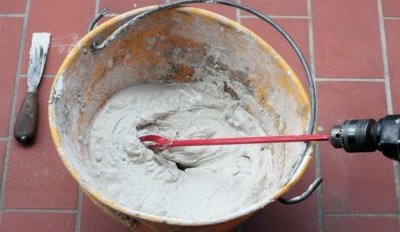
Materials for building a stove or fireplace are selected based on their characteristics.
There are several types of adhesives for ovens. Heat-resistant, heat-resistant up to +140 °C.
Heat-resistant, maintaining strength even with temperature fluctuations from -10 to +140 °C; heat-resistant and heat-resistant, capable of withstanding heat from 1000 °C; fire-resistant and fire-proof, do not lose their properties when exposed to open flame.
Content
- Types of adhesives for laying and facing stoves and fireplaces
- How to choose heat-resistant material for gluing?
- Heat-resistant glue from different manufacturers: Terracotta, Hercules and others
- Making heat-resistant tile adhesive with your own hands
- Useful video
- Ready-to-use adhesive mixtures
- Comments (5 opinions)
Types of adhesives for laying and facing stoves and fireplaces
Glue is a solution of viscous structure, which binds bricks in masonry and decorative elements. Depending on the type and purpose, the mixture contains cement, clay, sand, mineral and synthetic substances in various proportions. Among the materials of the composition are:
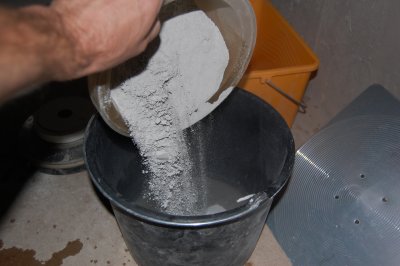
- filler;
- binding component;
- plasticizer.
For the chimney choose a heat-resistant adhesive mixture. For heating - heat-resistant. Glue for the foundation A heat-resistant material is used for the fireplace or stove. In the masonry heat- and moisture-resistant mixtures are used.
The glue is sold as a mixture of dry components or as a ready-made solution.
Clay-cement-fireclay
The cheapest and most popular masonry mixtureIt consists of sand filler and clay-cement binder. Fireclay fiber is used as a plasticizer.
This type of glue is durable, fire-resistant, heat-resistant. The main disadvantage of the material is weak adhesion, therefore, it is not recommended to move or adjust the brick during laying. It is immediately placed in place, otherwise the seam will be of poor quality. Heat resistance of the mixture - up to 1200˚C.
Clay-cement-fireclay glue is used for laying stoves that will work on solid fuel. It is not used for finishing, except for horizontal surfaces. The mixture is used to create the base of heating devices.
Fireproof on kaolin and aluminosilicates for tiles and porcelain stoneware
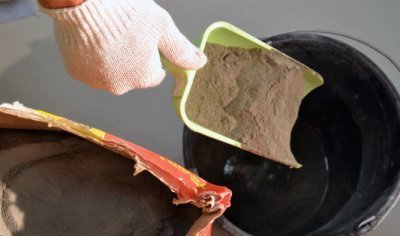
The adhesive mixture binders are heat-resistant aluminosilicate cement and white clay.
Filler - quartz sand. Liquid glass is used as a plasticizer.
Main properties of the material: good adhesion, heat resistance, fire resistance.
The material is suitable for decoration with porcelain stoneware And tiles constructed oven.
Attention! The disadvantage of the glue is its relatively short service life. about 20 years. This deficiency is due to the presence in the composition liquid glass, which over time loses its plastic properties and crumbles. Liquid glass is paper glue. The plasticity of such a mixture is initially low.
Heat-resistant mixture with talc chlorite plasticizer
The glue contains:
- filler - quartz sand;
- binding components - aluminosilicate cement, kaolin;
- plasticizer - soap chlorite.
The material provides excellent adhesion, the seams are very strong. The glue is heat-resistant, retains its strength when heated up to 1500 ˚C. The balance of heat capacity and thermal conductivity serves as another indicator in favor of the material.
Adhesive mixture is universal, suitable for building stoves in the house and on the garden plot. Its only drawback is high price.
How to choose heat-resistant material for gluing?
When choosing heat-resistant glue for a brick stove and fireplace, consider type of finishing and building material and its scope of application:
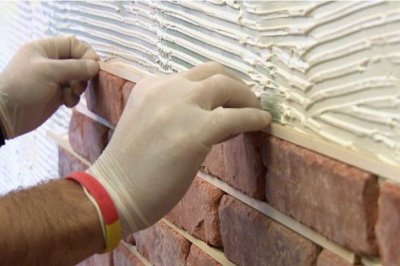
- For decorating a fireplace When laying tiles or natural stone, use mixtures with high plasticity and good adhesion.
- For laying The plasticity index may be lower. The main thing here is heat resistance and strength.
- Dfor the firebox It is essential to use a fire-resistant solution.
The location of the future oven also influences the choice of glue:
- For street buildings choose mixtures that can withstand sub-zero temperatures, as well as their sharp fluctuations.
- For a stove that will be built in a bathhouse, use vapor- and waterproof materials.
On the factory packaging, the manufacturer indicates the scope and features of application of its products.
For the installation of a metal firebox or chimney, manufacturers offer a special adhesive with a unique composition. The adhesive mixture for metal withstands temperatures up to 400˚C.
Heat-resistant glue from different manufacturers: Terracotta, Hercules and others
There are many brands of stove glue on the construction materials market. Some dry mixes are the most popular among consumers due to the quality of their composition.
"Terracotta" — stove glue with good adhesion, heat-resistant. Cement-clay mixture is suitable for stove construction. The material is intended for cladding, but it is not used for finishing fireplaces. When using such a solution, the brick is laid 2-3 rows, then stop work to allow the glue to harden.
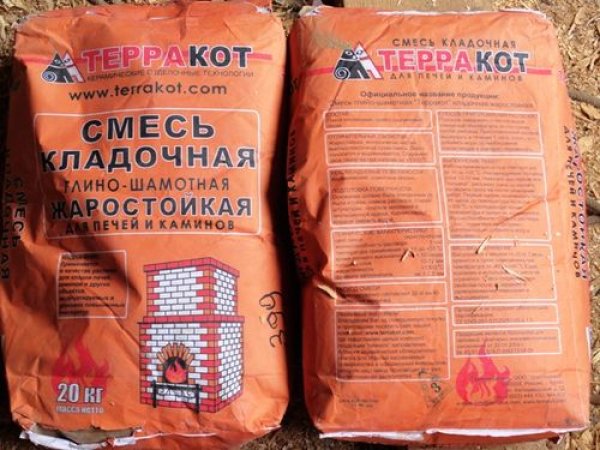
Photo 1. Two packages of heat-resistant clay-fireclay masonry mixture "Terracotta". Weight of one package is 20 kg.
"Profix" — adhesive with high plasticity, suitable for laying and finishing. It is heat-resistant. Withstands temperatures up to 1200 ˚C.
Scanmix Fire — Finnish brand of heat-resistant glue for building wood-burning stoves. The mixture is suitable for building chimneys. Retains properties under the influence of temperature 1200˚C.
Ivsil Termax — glue that allows you to create a reliable base for the stove, suitable for cladding. The material has good plastic properties, heat-resistant (up to 250˚C).
Ceresit flex CM16 — the facing adhesive mixture allows you to lay finishing tiles on uneven surfaces.
"Hercules" — is intended for laying stoves and fireplaces, as well as their facing with ceramic tiles. Withstands short-term heating up to 1200 °C.
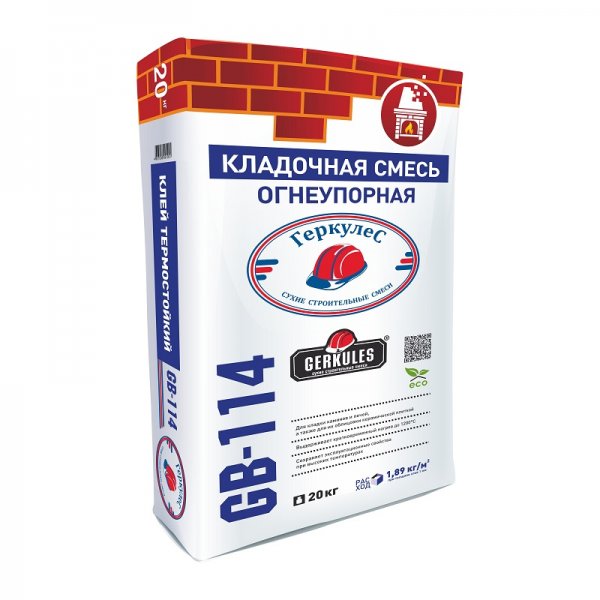
Photo 2. Packaging of refractory masonry mixture for Hercules furnaces. The pack contains 20 kg of dry matter.
Making heat-resistant tile adhesive with your own hands
For finishing with decorative tiles no thicker than regular tiles, use clay, cement and river sand in a ratio of 1:1:3. It is important to choose the right components. Particular attention is paid to clay, which may cause some difficulties. It is checked as follows:
- Twist between the palms into a tourniquet.
- The resulting bundle is wrapped around a cylindrical object.
- The condition of the clay is assessed by the cracks that form. If only the top layer of the bundle breaks, then the clay is greasy and sand needs to be added to it. The composition is considered normal if the breaks are evenly distributed along the entire length of the bundle and amount to 1/3—1/4 its thickness. Deeper ruptures (from ½ thickness) show that the clay is lean and requires a fattening agent.
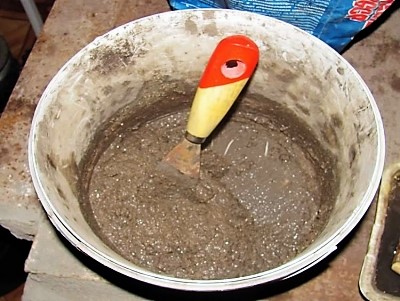
Prepare the fattener yourself:
- cut off the polyethylene canister;
- fall asleep 1/5 part of it is finely ground clay;
- pour in water and stir;
- waiting for sediment to fall;
- drain off half of the supernatant liquid;
- The sediment is allowed to settle and used as a fattening agent.
Clay, cement and river sand are mixed dry, filled with water and mixed by hand. The resulting solution should be homogeneous consistency and normal viscosity (the trace from raking a properly prepared composition does not tear or float). Add 200 g sodium chloride. The glue is ready for use.
Useful video
Watch the video in which an experienced stove-maker explains how to choose glue for laying stoves and fireplaces.
Ready-to-use adhesive mixtures
Manufacturers offer ready-to-use adhesives that do not require adding water. The material is easy to work with, but it is more expensive than dry mixes. The most popular brands are:
- "Parade K-77" - fire-resistant glue, maintains strength at temperatures reaching 800˚CThe material is not used on plastered surfaces.
- "Terracotta mastic" — a universal solution for finishing works, minor repairs and construction.
- Mixonit Thermo — mastic for lining stoves built outdoors. The material does not deform under the influence of high humidity and negative temperatures. The composition hardens quickly, so it is only suitable for professionals or minor repairs.







Comments